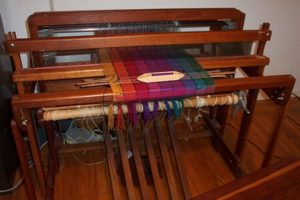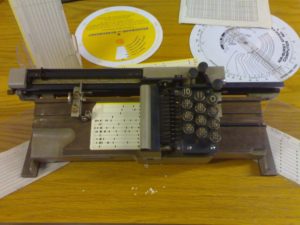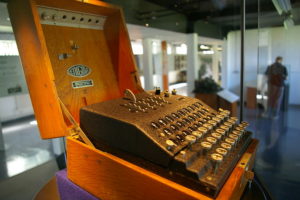What Does CNC Machining Owe Sheep?

A sheep
You may look at a sheep and wonder what is has to do with CNC (computer numerical control) machining. The truth is, we might not have seen the creation and expansion of manufacturing and computing as it is now if not for fleece and a few creative thinkers in the 18th century.
The textile industry began in cottages with families making cloth in their own homes. The men and boys operated the looms while the women and girls spun the yarn, which came from sheep (told ya!). It was a long, laborious process and production was slow.
Faster, loom, faster!
A British man, John Kay, apprenticed to a weaver, was a quick study and instead of staying to become a weaver himself, he went home and invented the flying shuttle. They called it the flying shuttle because, in the hands of an experienced weaver, the canoe-shaped vessel seemed to fly. The invention made it possible for one person to run the loom, weaving larger cloths more quickly. Now that weavers worked faster, they needed more thread than spinners could create.

Loom using a flying shuttle
Speed up the spindle
Along came James Hargreaves to create the spinning jenny, a machine enabling spinners to use up to 8 (and later 120) spindles at a time and create a lot more thread.
Jacquard and punch card technology
During that time in France, Basile Bouchard punched holes in paper tape to control a loom and Jacques de Vaucanson followed, building the first automated loom. Side note: De Vaucanson also invented the first metal slide rest lathe. Using the discoveries that came before, Joseph-Marie Jacquard linked multiple punched cards to tell the loom which shuttles to use and when. Jacquard produced intricate patterns in silk and wool in a fraction of the time it takes humans to create a similar product.

Jacquard loom
Punch cards and data
This punch card technology led Britain’s Charles Babbage to create his difference and analytical engines, precursors to the modern calculator and computer. American Herman Hollerith used punch cards to record and read data he collected in the 1890 US census. Hollerith’s company and four others did that merge, acquire, and compete thing for the punch card market in the 1930s. In the end, IBM and Remington Rand emerged from the Thunderdome, victorious.

Hollerith punch card machine
Punch cards, business, and codebreakers
Thanks to their prodigious punch card production, IBM’s punch cards become the standard for businesses all over the world. They weren’t the only producers, however. Bletchley Park, the home of British WWII codebreakers, printed 2 million punch cards a week at their peak.

Enigma machine
The CNC machines we know and love
In the 1940s, the first NC (numerical control) machines used punched tape to manipulate the machines. Later, advances in computing and CAD (computer aided design) and CAM (computer aided manufacturing) eschewed the punch cards in favor of computer software, leading to the CNC machines we have in machine shops and factories all over the world.

CNC machine at work
The point of all this is it took a lot of people and ideas to get to CNC machining, which has become a vital part of manufacturing. Since bearings are a vital part of CNC machining, using the transitive theory, Alpine Bearing, a leading distributor of machine tool spindle bearings, is a vital part of CNC machining, and therefore, manufacturing. I love it when a plan comes together.
Follow these links to read more of our Bearings 101 articles.
Glossary of Bearing Terms
Deep Groove Bearings
Bearings vs Bushings
What bearing-oriented subject should we write about next? Let us know by email, phone, or by using the chat function on this site.
Photo credits:
Laurie Byrne on Unsplash
“loom-at-home” by RuTemple is licensed under CC BY 2.0
“File:Jacquard loom p1040320.jpg” is licensed under CC BY-SA 3.0
“Hollerith punch card machine” by SimonWhitaker is licensed under CC BY-NC 2.0
“Enigma Machine (Bletchley Park)” by Tim Gage is licensed under CC BY-SA 2.0
“CNC Machining aluminum billet with Tormach” by zombieite is licensed under CC BY 2.0